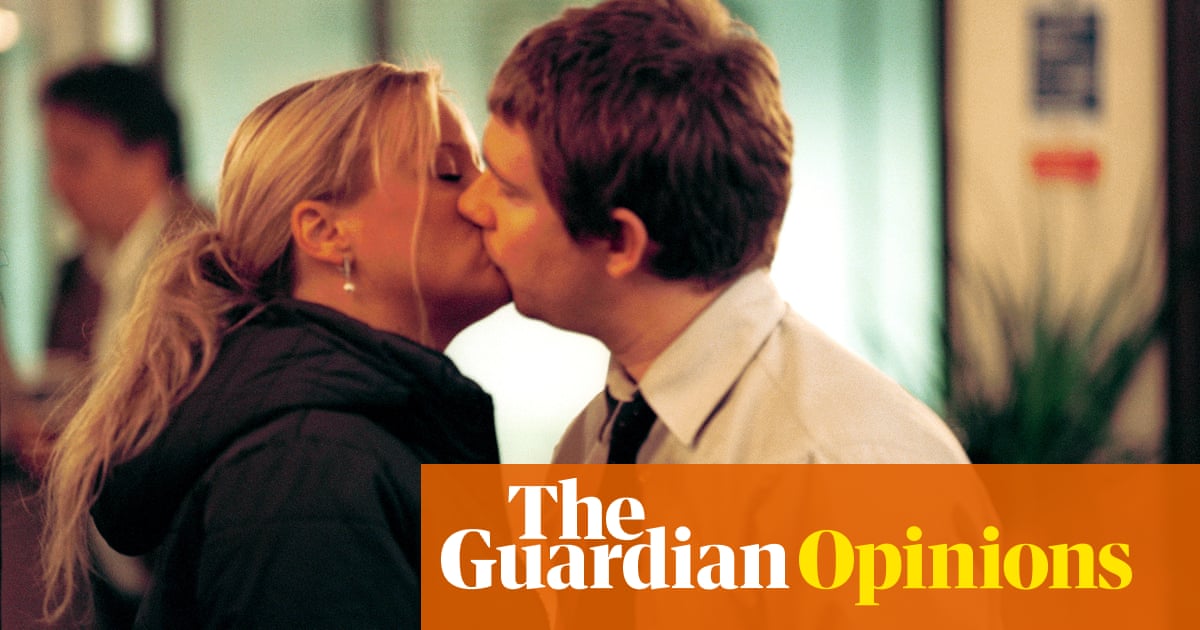
Walter Pfeiffer’s hands have trembled ever since he was a little boy at primary school. The problem, recalls the Swiss photographer, only intensified as he aged. “It amuses me,” he says, “when people call me a genius for using flash from the very beginning. It gave me my style – but I only did it because a flash stabilised my images.”
Pfeiffer’s photographs exude a perpetual summery warmth, as if all the harshness of life has been banished. Before gaining recognition in the art world, he spent years shooting for the underground gay zine scene. Remarkably, after achieving success, he refused to change his approach: it has always been just him and his subject, like a painter with a muse.
When people are boring – mamma mia! – it’s terrible
These are mostly young men, often captured in moments of exuberance, leaping in the air or striking a pose at home or by the lake. Many shots hover between dream and reality, seeming to speak of first love. “People I don’t like leave me cold,” says Pfeiffer. “But in the presence of real beauty, I go crazy – and I could work for 24 hours. Beauty is rare, not an everyday occurrence, and it’s better that way. If there was too much beauty around we would grow bored with it.” He laughs.
As you flip through Chez Walti Photographs 2000-2022, his latest book, an epic volume spanning 400 pages, you soon grasp how much energy he puts into his craft. While photography still excites him as much as it did in the early days, taking pictures is becoming increasingly strenuous – partly because of his unsteady hands but also due to the difficulty of finding the right models. “Oh, I’m not a drama queen,” he says. “I truly mean it. If I hadn’t been an artist, my life would have been easier.”
Pfeiffer, although a seasoned photographer of 50 years, was unearthed by millennials, who became enamoured of his hyper-colourful shots in the early 2000s. According to Pfeiffer, they embraced him for the same reasons the art world had rejected him. His photographs seemed overly simple, almost amateur. The fashion industry, even more so, tends to value intricacy and depth.
However, as social media boomed, Pfeiffer’s work began to stand out. It was seen as innovative, ahead of its time. “It’s the story of my life,” he says. “I had to earn it all, step by step. I never thought I would make it this far. People consistently put me down, claiming I was just a ‘naive’ photographer. After a while, you end up believing it.”
A monumental Pfeiffer retrospective recently concluded at the Kunstmuseum in Lucerne, and his book signings at cities across Europe always draw huge queues of fervent young photography enthusiasts. Few artists have demonstrated such an enviable ability to foresee – and perhaps lead – taste. It’s no coincidence, although it is certainly ironic, that Pfeiffer is now embraced by the fashion industry.
“In the beginning,” says the 77-year-old, “art directors would approach me with mood boards, sketches and ideas. Oh God, I was so frightened! I’d listen to them but eventually I’d say, ‘Listen, what’s the point of doing something that others have already done?’ I didn’t have an agent at that time. I am a self-taught artist and, frankly, I didn’t know how to handle that kind of stuff. I’m not a professional. When I had to go to London for a fashion shoot, I was so financially strained that I could only afford a second-rate hotel and had to compress everything into a two-day window. Again, this is the story of my life.”
He remembers i-D magazine sending a sizeable box of exorbitantly priced clothes to his Zurich apartment for a photography session. Fearful of damaging the valuable garments in transit, Pfeiffer had them modelled in his living room.
In fact, he has never had his own studio. Nor does he like to preconceive an image. His ideal approach involves meeting the subject then, much like on a blind date, embracing whatever vibe unfolds. “Que sera sera,” he says with a shrug. The results are generally on the lighthearted side, although there is nothing vague about them.
Pfeiffer, born in the Swiss countryside “on the same day and year as Bruce Weber”, originally trained as a painter. “I would use Polaroids as aids,” he recalls. “Then, in the 1970s, I bought a small automatic camera.” Around the same time, he relocated to the city. “My first models were beautiful Zurich street kids. The pursuit of real beauty is the goal of my life. Even today, the people I photograph evoke the Hollywood stars of the 1950s. But they don’t have to be aware of that. I prefer non-professional models. I never had models – I had real people.”
The film stars he would see at the cinema felt like people he was growing up with. As models, he still regards them as unsurpassed. “There are a lot of mirrors and glasses in my pictures, a tribute to my enduring passion for Hollywood and for Cecil Beaton, with his magnificent photographs featuring mirrors. It’s about unattainable perfection. I never quite reach it, so I simplify it. I’ve had several Cecil Beaton moments.”
Pfeiffer realised he was gay at the age of 16. “I was the naive country boy. One day I met a man who was gay, but I didn’t even know what that meant. He introduced me to [gay magazine] Der Kreis.” During that time Pfeiffer also fell for the homoerotic photographs of Karlheinz Weinberger and the highly masculinised drawings of Tom of Finland. “I was captivated by all that beauty and couldn’t comprehend what was happening inside me. Those were different times. You couldn’t just say, ‘I’m 16 and I’m gay.’ Now, it’s like a seal has been broken.”
After photographing his friends in the 1970s, he decided to publish his first book, now a rare find fetching giddying prices online. “It was produced by a publisher so impoverished that we had to convert all my photos to black and white to reduce the printing costs. It’s still a good book, though. It doesn’t age. You must be very careful when publishing a book: some get old while others remain timeless. I have so many books that already look dated even though they were published just three years ago.”
From then on, he says, his life became a constant and often exhausting pursuit of beauty. “It’s my obsession,” he says. “It’s what makes me click click click. I’m obsessed with all those people who take me to new ground, new ideas. When people are boring – mamma mia! – it’s terrible. Too much work. But when the right thing comes along, I feel alive again, although I’m getting slower with age.”
We are in the café of the Swiss National Museum in Zurich. Pfeiffer, drinking tea, reveals that he has been working on an archive for some time. It’s not thousands of images, as one might assume. “I used to shoot analogue,” he says. “And I didn’t always have the money to buy film and develop photos. So in the early days, during fashion shoots, I would be like, ‘Click, click, click – OK, we have it!’ But only because it was all too expensive for me.”
In addition to mirrors, another thread running through Pfeiffer’s work is flowers. They often adorn the hair or faces of his models, reminiscent of the images of Baron von Gloeden, known for his nude shots of young Sicilian men. However, unlike the German baron, Pfeiffer uses kitsch and camp in an ironic manner. His models wear flashy chandeliers instead of hats, while a garish piece of cloth might be wound into a turban. “I think a good photograph needs no explanation,” he says. “One should not even think, but just be amazed.”
Despite having photographed for the likes of Vogue and Vanity Fair, shooting everyone from Tom Ford to Tilda Swinton, the undercurrent of first love is something Pfeiffer is constantly, almost desperately, trying to convey. “Of course I feel love for my models,” he says. “Love is necessary for my work. But I must maintain a certain distance. If there’s no distance and you’re in love, well, then you’re blind.” He laughs and takes a sip of tea. “And it’s not ideal to be blind – especially if your hands are constantly shaking.”











